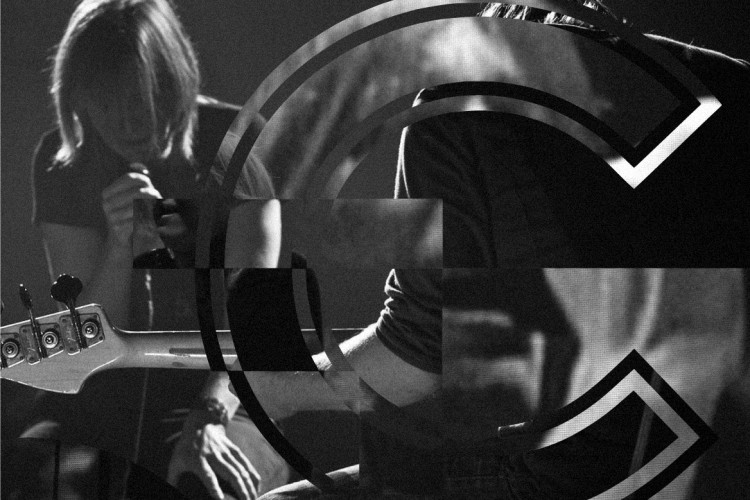
The other day, I watched a video showing a “Helicopter String Quartet”, which was put together by Austrian avant garde classical composer Karlheinz Stockhausen. The performance comprised of a string quartet on four individual helicopters, playing their instruments and adjusting the music they create with the motion of the helicopter.
What mesmerized me the most was how Stockhausen’s musicians managed to incorporate the ambient sound of rotating helicopter blades into a piece of music, challenging as it may be. The vehicle became a musical instrument.
The music sheet for the suite mostly showed frantic zig-zagging lines, and the string quartet themselves adjusts their playing with the intensity of the helicopter blades’ tremolo-like sounds.
His Helicopter Suite emphasizes the sonic qualities of non-musical objects, and its musical capabilities.
As shown by the musical STOMP! or through films such as The Sound of Noise, music is not limited to only being conveyed through musical instruments. Indeed, almost every object that exists on this Earth makes a sound, and those sounds can be incorporated into proper musical compositions.
Due to that fact, music can be viewed as something that eternally exists around us; living in material objects, waiting for its potential to be tapped out.
Avant garde compositions make use of this fact very well. You got your Steve Reichs, your John Cages and your La Monte Youngs trying to push the boundaries of what music can be really defined as. These three composers were notable for their compositional minimalism, proving that music exists in the simplest of forms, in any variation imaginable.
As objects, the sonic qualities that non-musical items give out bring quite the sensation to the ears. The hum of a Ferrari engine is music to a car lover’s ears, so as the sound of discharged machine guns to the military. With the right idea, these “musical” qualities could be incorporated into compositions, or actual works, maybe as an addition to the ambience or even become the rhythm itself.
Some objects produce sounds which seem to fit perfectly into certain styles or genres. For one, the recorded sound of a heartbeat works very effectively as a beat pattern for hip hop or dance tracks. Hammers pounding concrete or metal could work well in Industrial music. Using Stockhausen’s example, helicopter rotor blades can add droning tremolos while vacuum cleaners create an immersing wall of sound. Both sounds are fit for that, yknow, kind of popular rock music where the guitarists try to create big walls of sound by staring into their pedals by their shoes? I forgot the conventional tag that sound was given.
In one of my previous columns, I discussed music sampling and taking bits and pieces of existing works into new works. The concept that I am discussing in this article is similar, but by taking bits and pieces of sound from any object in existence, and translating them into something new.
Aside from Stockhausen, one of the more prominent practitioners of this awareness is John Cage, a.k.a, the boldest man in music. This is the person who released the silent “4’33” in 1952, a piece which either challenges the notion of music altogether or laughs in the face of it.
Silence is an unconventional source of music, because, basically, there is no sound and no vibration involved there, and therefore music should not exist. But Cage suggested that silence is almost nonexistent, as in every situation, time and place, there is always sound, and within 4’33, all sound becomes music.
Technically, while the piece consists of pure silence, his piece utilized everything from the human heartbeat, to coughing and distant cars passing by translating those minute sounds become the music itself.
Another notable Cage composition is his 1951 Imaginary Landscape no. 4 piece, which is made up of an orchestra of transistor radios. The piece consists of nothing but radio static and occasional snippets of music and dialogue, creating a fascinating musique concrete.
Due to the nature of the piece, no two live performances would likely have the same sounds, and it can result as a devastating noise-laden drone piece or something pretty upbeat, yknow, depending on whats on the radio at the time.
With this piece, Cage again asserted the notion that music exists inside all objects in any form, be it material or concept, living eternally beyond instruments.
And that is what I agree with too. Music does not live solely in musical instruments, or even a singing voice. The conventional everyday world is populated by objects that produce sound. It just takes an immersive ear to translate those sounds into music, as it enters your brain.
I ask the reader, what is your definition of music? What sounds do you describe as music? What non-musical objects produce the best sound? What is the best sound your ears have ever heard?
Play the List:
(some music that utilize objects into their composition)
John Cage – Imaginary Landscape no. 4, for 12 Radios.
Using purely radios and whatever’s on air at the time, creating a plunderphonics type composition.
Sunn O))) – Belurol Pusztit
In this piece, drone overlords Sunn O))) utilizes a jackhammer for their hellish piece. The results are much like what jackhammers would usually do to a human ear.
Karlheinz Stockhausen – Helicopter Suite (by Helicopter String Quartet)
The piece that inspired this article. Watch as a string quartet travel on four separately coordinated helicopters with their instruments, as they try and blend the helicopter’s ambience into their sound.
John Cage – 4’33
Using whatever’s present in the hall to fill the sheet music of this piece.











